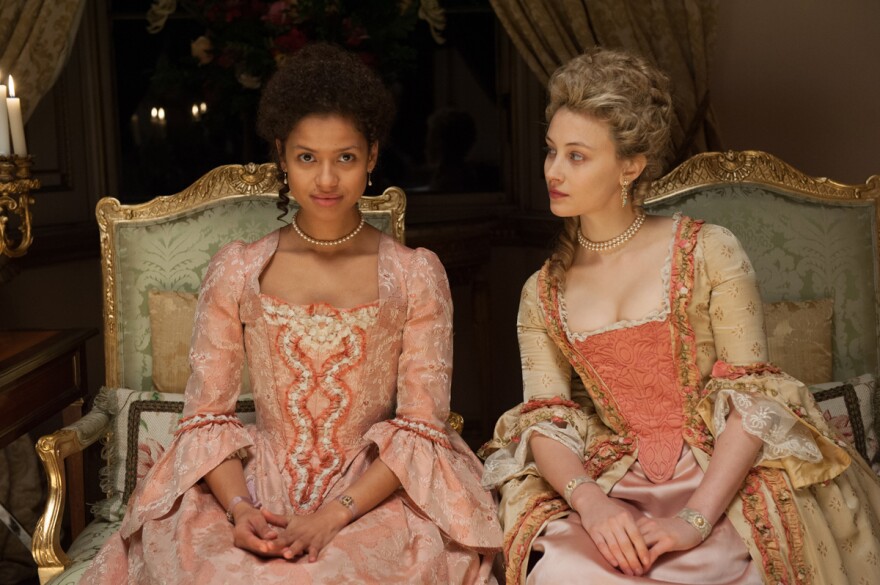Amma Asante’s Belle looks like it came out of the manual for how to make utterly respectable and perfectly uninspired movies. It’s a paint-by-numbers film.
Elements of good material run through it, but just about every piece feels designed by committee, down to the fundamental shooting and cutting of the film. Here comes the pensive closeup, then the wide shot of lovely green English fields, to cradle the feeling that in spite of momentary distress, ultimately all is well and right – not only in the world of the movie, but in our world too.
Belle is based on two related historical events. In 1769, a young half-black woman from the Caribbean named Dido is adopted into a family of white aristocrats, to whom she’s related by blood. Her great uncle, John Lindsay, Lord Mansfield (Tom Wilkinson), also happens to be the Lord High Chief Justice of England. Just when Dido becomes eligible for marriage, John Lindsay is to rule on a court case crucial to the slave trade at the time.
It’s a fascinating case.
In 1781, the slave ship Zong, supposedly in trouble, dumped its cargo at sea, meaning that 142 human beings were tossed overboard, and now the owners of the ship want their insurance company to cover the losses. The case marks the moment that Dido wakes up to her complicated social position as a free black woman living in the aristocracy. It also ties in with her inheritance, her marriage possibilities, her position in the family and the family’s relation to the rest of the world – not to mention the ethical, legal and family complications faced by the Lord High Chief Justice.
But a better movie would get past watered-down Jane Austen.
Belle makes you think of Downton Abbey without Maggie Smith’s saltiness. Too many scenes play out with characters in pretty settings discussing who inherits what, and why so and so should marry whosits to preserve one estate or another. You’ve seen plenty of this on PBS, and in the countless films and TV series wrung out of poor Jane Austen’s few novels.
Belle is relentlessly noble. Any character who dares comment on Dido’s blackness gets the villain stamp before the words leave the screen. One snotty young gent curls his lip like Snidely Whiplash from frame one, and to seal the deal, the creep grabs Belle’s private parts at a garden party. The movie doesn’t have the nerve to let the nastiness earn its condemnation from the inherent ethics of the story, the film, the characters or the audience. The picture makes sure you get the point from the giddyup and you get it good.
Then the film returns to its undisturbed prettiness.
Belle is lovely to look at – both the film and the character – and so for all its blandness, you get seduced. Belle is set on a fabulous estate – so much green, so many flowers and trees. The house is accented by elegant furnishings and the kind of dresses that must have been hell for women to wear, but in a movie look ravishing. Most of all Gugu Mbatha-Raw as Dido is a gorgeous young woman, and even if the long shots of thoughtful, maturing Dido are dull and repetitive, they can also be irresistible.
But when you boil it down, Belle is one more film in which a powerful white man rescues a helpless human being of color. This story could be told a lot of ways. It doesn’t have to resolve in the white judge’s decision, and it could have some starch. At one point, Elizabeth, a white cousin raised with Dido like sisters, turns vicious and attacks Dido for her skin color and her illegitimacy. A scene later, the two have their usual late night pillow talk – as if nothing had happened. In Go Down, Moses novelist William Faulkner writes a similar scene with two boys – and the repercussions last for generations.
Belle is afraid to make things matter.






